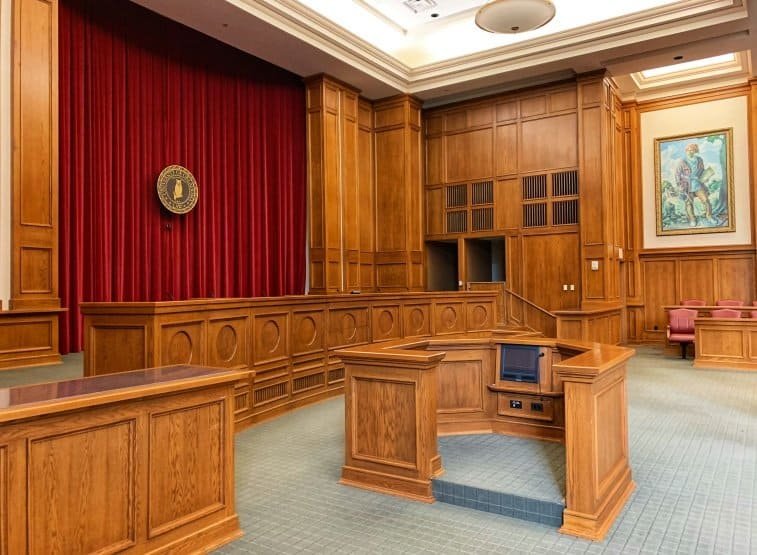Be the voice. Not the chaos.
Splitifi’s GAL AI tools give you sharper insights, cleaner documentation, and stronger neutrality in high-stakes custody cases. Built to protect children and your credibility.
You didn’t sign up to get manipulated.
GALs need clarity, not chaos, especially in cases where both sides are spinning their own version of the truth. Splitifi equips you with timeline tools, interview coaching, allegation pattern analysis, and streamlined reporting workflows that let you focus on what actually matters: the child’s best interest.
Crafted with input from former GALs, family court judges, and custody evaluators across the country.
Turn chaos into command.
Category
Case Command & Structure
SnapCase lets GALs drag in PDFs, texts, voicemails, and photos. AI instantly sorts, tags, and builds a case dashboard so nothing gets missed or duplicated.
Pain Points We Solve
• Evidence arrives in scattered formats
• No fast way to organize a case
• GALs waste hours finding what matters
• Missed info risks court credibility
Benefits
• Drag-and-drop case intake
• Auto-tags by source and topic
• Groups custody, disclosure, and school docs
• Flags gaps and duplicate files
• Instant case dashboard for review or court
See the story in order.
Category
Case Command & Structure
TimeMap turns uploads into clear event timelines. AI reads interviews, texts, and filings to build a visual sequence of key events like moves, injuries, and disclosures.
Pain Points We Solve
• Events get jumbled across files
• GALs lose time piecing together what happened when
• Court wants a clean, neutral sequence
• Key moments may go unnoticed
Benefits
• Upload any file—AI builds timeline
• Tags events like separation, reports, removals
• Visual layout shows gaps and overlaps
• Exportable for court or team briefings
Spot contradictions before court does.
Category
Case Command & Structure
LinkLens scans across affidavits, reports, and statements to flag contradictions. It helps GALs catch story shifts early and track who said what.
Pain Points We Solve
• Conflicting accounts are hard to track
• Manual comparison wastes hours
• Small shifts in language can change meaning
• GALs get blindsided in court
Benefits
• Flags mismatched facts across documents
• Highlights language changes or omissions
• Tracks narrative shifts by party
• Helps prep clear, conflict-aware reports
Hear every side, side by side.
Category
Observation & Interaction
EchoSplit compares statements from the child, parents, and third parties. It detects emotional tone, verbatim mirroring, and signs of possible coaching.
Pain Points We Solve
• GALs struggle to compare who said what
• Coaching and repetition can go unnoticed
• Small differences in tone or detail matter
• Courts want source-aware, neutral analysis
Benefits
• Upload interviews or notes—AI aligns by topic
• Flags echoed language and emotional shifts
• Detects inconsistencies or missing details
• Clear, side-by-side summary for reports
What the child’s body is telling you.
Category
Observation & Interaction
BodyCue analyzes nonverbal behavior in visit recordings. It tracks eye contact, posture, fidgeting, and withdrawal across time and settings.
Pain Points We Solve
• Nonverbal cues are easy to miss or forget
• GALs rarely have time to rewatch full visits
• Some disclosures are shown, not said
• Court needs objective support for concern
Benefits
• Flags body language linked to stress or safety issues
• Compares child’s behavior across parents or locations
• Timestamps key changes in engagement
• Creates a nonverbal summary for GAL reporting
Smarter interviews for every age.
Category
Observation & Interaction
PromptPlay guides GALs through child-friendly conversations. It offers age-adjusted prompts, tracks responses, and flags emotional language or hesitations.
Pain Points We Solve
• GALs risk leading questions or inconsistent phrasing
• Hard to adjust tone for age or trauma status
• Key moments get missed or poorly documented
• Interviews may not hold up in court
Benefits
• Age-appropriate interview prompts
• Tracks tone, pacing, and emotional keywords
• Flags hesitations, avoidance, or coached phrasing
• Suggests follow-up questions in real time
Play reveals what words can’t.
Category
Observation & Interaction
SceneBuilder analyzes child drawings, role-play, and dollhouse interactions. It detects recurring themes, trauma symbols, and relational dynamics.
Pain Points We Solve
• Young children struggle to verbalize experiences
• Symbolic play is often under-documented
• GALs may overlook patterns without context
• Court needs grounded interpretation, not guesswork
Benefits
• Upload play recordings or photos
• AI detects themes like fear, conflict, or protection
• Tags recurring images or roles across sessions
• Adds insight without overstepping interpretation
Don’t miss the danger signs.
Category
Safety & Behavioral Pattern Detection
FlagX scans texts, interviews, and histories for red flags. It detects grooming, alienation, coercion, and control dynamics with pinpoint alerts.
Pain Points We Solve
• Red flags are subtle and spread across documents
• GALs can miss patterns in high-volume cases
• Safety risks go unreported due to vague signs
• Courts expect explanation with evidence
Benefits
• Flags known abuse and alienation patterns
• Scans across sources for cumulative behaviors
• Alerts based on proven risk markers
• Links red flags to time and source for reports
Spot the script before it’s spoken in court.
Category
Safety & Behavioral Pattern Detection
CoachWatch compares child interviews for signs of coaching. It tracks repetition, sudden language maturity, and echoing across sessions.
Pain Points We Solve
• GALs can’t track subtle coaching over time
• Parroting may seem like consistent testimony
• Language shifts are easy to miss
• Court scrutiny demands clear, source-linked proof
Benefits
• Compares phrasing across multiple interviews
• Flags repeated wording and scripted delivery
• Detects maturity leaps or unnatural recall
• Helps validate or question child statements neutrally
Track emotional shifts over time.
Category
Safety & Behavioral Pattern Detection
MoodMap charts a child’s emotional tone across visits, interviews, and statements. It helps GALs spot patterns of fear, shutdown, or resilience.
Pain Points We Solve
• Emotional changes go undocumented or misread
• GALs struggle to track behavior across weeks or months
• Court wants evidence of ongoing harm or improvement
• Mood observations often lack structure or sourcing
Benefits
• Graphs emotional tone by date and setting
• Flags mood swings tied to certain people or events
• Visual trends support or challenge placement stability
• Exportable for court-ready summaries
Hear what wasn’t said.
Category
Safety & Behavioral Pattern Detection
Silent Signals picks up missed cues in child interviews—pauses, diversions, topic changes—that often indicate fear, confusion, or pressure.
Pain Points We Solve
• Subtle disclosure cues get overlooked
• Children may avoid or sidestep unsafe topics
• GALs miss follow-up opportunities
• Courts expect clear explanation for missed risks
Benefits
• Flags hesitation, redirection, or silence at key moments
• Suggests follow-up areas for re-interview
• Tags nonverbal indicators of distress
• Builds a log of unexplored or risky topics
See the full risk picture.
Category
Safety & Behavioral Pattern Detection
RoleCall builds a visual family map from filings, emails, and interviews. It shows who’s involved, their roles, and custody history at a glance.
Pain Points We Solve
• GALs lose track of complex family webs
• No clear view of third parties (partners, teachers, relatives)
• Custody histories are buried in files
• Confusion delays court prep and decisions
Benefits
• Auto-generates family and custody tree
• Tracks changes in guardianship or placements
• Links each person to documents and disclosures
• Editable for court-safe snapshots
Build court-ready reports in minutes.
Category
Documentation & Reporting
ReportGen turns interviews, notes, and observations into structured GAL reports. It separates fact, observation, and recommendation with source tagging throughout.
Pain Points We Solve
• Report writing is time-consuming and inconsistent
• GALs struggle to keep tone neutral under pressure
• Mixing fact and opinion weakens court credibility
• Source tracking is often missing or unclear
Benefits
• Drag in materials—AI builds structured draft
• Tags every statement by source (child, parent, third party)
• Separates observation from conclusion clearly
• Editable for court formatting and team review
Every fact, clearly sourced.
Category
Documentation & Reporting
SourceTag auto-tags every line of a GAL document with its origin. It ensures courts see where each detail came from, reducing dispute and increasing trust.
Pain Points We Solve
• Reports often lack clear source tracking
• GALs may misattribute disclosures
• Courts question unsupported summaries
• Manual tagging is tedious and easy to miss
Benefits
• Auto-tags lines: “child stated,” “police noted,” “GAL observed”
• Ensures every statement is backed by source
• Works with reports, notes, and attachments
• Strengthens trust and reduces courtroom challenges
Talk it out, turn it in.
Category
Documentation & Reporting
Heard captures GAL thoughts via voice and turns them into organized drafts. Speak freely, and it groups ideas by topic for easy editing and court prep.
Pain Points We Solve
• GALs think faster than they can type
• Ideas get lost between visits and reports
• Note dumping leads to messy reports
• Typing under pressure affects tone
Benefits
• Speak thoughts—AI transcribes and organizes by theme
• Suggests structure for final report
• Tracks source mentions as you speak
• Saves time and boosts clarity
No red flag left behind.
Category
Documentation & Reporting
Checkboard scans GAL notes and reports to ensure all key areas are addressed—disclosures, sibling consistency, placement risks, and more.
Pain Points We Solve
• Important issues can slip through under pressure
• GALs may forget follow-ups or sibling checks
• Courts notice what’s missing, not just what’s included
• Manual checklists don’t adapt to each case
Benefits
• Scans for missing follow-ups or observations
• Checks sibling report alignment
• Flags skipped placement or safety reviews
• Customizable for case type and court preferences
One page. Total clarity.
Category
Documentation & Reporting
BriefBuilder creates a pre-hearing summary that highlights top concerns, key facts, and neutral phrasing—ready to hand to the judge or use in testimony.
Pain Points We Solve
• GALs walk into court without clear prep
• Hard to summarize a complex case under pressure
• Emotional testimony can derail focus
• Courts want concise, neutral overviews
Benefits
• Auto-builds a one-page hearing brief
• Highlights top concerns with linked sources
• Uses neutral, fact-based language
• Includes a hearing checklist to prep fast
See every story, side by side.
Category
Multi-Party & Collaboration
SplitView lets GALs compare parent and third-party narratives on key issues—like holidays, schooling, or discipline—line by line.
Pain Points We Solve
• Conflicting narratives take hours to untangle
• GALs miss subtle differences in wording
• Inconsistencies cause confusion in court
• Hard to track evolving stories over time
Benefits
• Aligns party narratives by topic
• Highlights key differences or omissions
• Flags shifting timelines or contradictions
• Creates side-by-side views for reports or court
Bridge the clinical and the courtroom.
Category
Multi-Party & Collaboration
TherapistSync converts therapist reports into clear, child-focused summaries. It flags conflicts between clinical findings and GAL observations without overstepping.
Pain Points We Solve
• Therapist reports are dense or not child-centered
• GALs struggle to integrate clinical input into reports
• Contradictions between GAL and therapy notes go unnoticed
• Courts expect clarity without misrepresenting therapy
Benefits
• Summarizes reports into GAL-friendly language
• Flags alignment or mismatch with observations
• Avoids overreach into clinical interpretation
• Keeps focus on child’s voice and legal relevance
What was said, what changed.
Category
Multi-Party & Collaboration
CourtEcho records and tracks courtroom statements. It flags where filings, testimony, or outcomes shift from what was said or filed before.
Pain Points We Solve
• GALs lose track of what was said in court
• Post-hearing updates don’t always reflect live outcomes
• Courtroom contradictions are hard to prove
• Hearing notes rarely sync with filed records
Benefits
• Logs and summarizes spoken testimony
• Compares court events with previous filings
• Flags changes, reversals, or new disclosures
• Helps track orders vs. reality across time
Spot what repeats, protect what matters.
Category
Multi-Party & Collaboration
PatternPulse analyzes GAL case data to detect repeated risk types, behavior patterns, and tactics. It helps build training and alert systems based on real trends.
Pain Points We Solve
• GALs face repeat risks but can’t always see trends
• Team learning is lost between cases
• Certain dynamics show up across families
• Training often lags behind lived patterns
Benefits
• Detects repeat red flags and tactics
• Flags language trends tied to coaching or control
• Informs team training and alerts
• Builds smarter systems from case histories
Your report, courtroom-proofed.
Category
Documentation Quality Control
ClarityCheck scans GAL reports before submission to flag ambiguous phrasing, unsupported conclusions, or emotionally charged language. It ensures tone neutrality and legal defensibility.
Pain Points We Solve
• Reports get challenged for bias or weak sourcing
• Emotional or unclear language undermines credibility
• GALs struggle to self-edit under deadline
• Courts need clean, neutral findings
Benefits
• Highlights vague or emotional wording
• Flags unsupported recommendations
• Suggests neutral, report-safe edits
• Customizable by jurisdiction or judge preference
What changed—and when?
Category
Timeline Integrity + Disclosure Tracking
ChronoCompare overlays new info against past statements, showing exactly what evolved over time. It catches hidden shifts in stories, custody plans, or risk indicators.
Pain Points We Solve
• Stories shift over time, but GALs miss the drift
• No easy way to track disclosure evolution
• Custody agreements change without clear trail
• Courts want a clear before-and-after view
Benefits
• Compares old vs. new filings, interviews, and emails
• Highlights changes in language, tone, and detail
• Flags disclosure delays or timing shifts
• Ideal for prepping cross-exam or updating reports
Your full case—visualized.
Category
Dynamic Case Visualization
VizVault turns every part of a GAL case into a visual map: timelines, party trees, document clusters, observation logs, and risk profiles—all in one interactive hub.
Pain Points We Solve
• GALs juggle timelines, reports, logs in separate tools
• No unified view of a case’s full structure
• Visual thinkers struggle to track complex cases
• Courts respond better to clean visual summaries
Benefits
• Dynamic dashboards of timelines, parties, events
• Click-to-expand disclosures, sources, and outcomes
• Customizable by case type or court preference
• Simplifies case transfer, briefings, and testimony
























